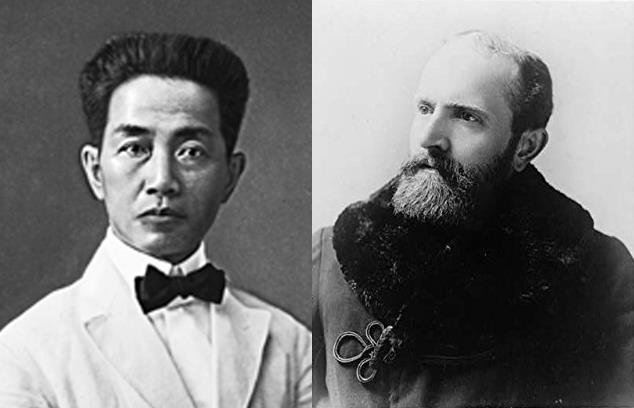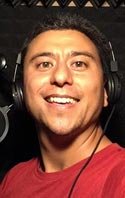A Distant War and the Filipino American Story
/Emilio Aguinaldo secretly met with U.S. Consul General Edward Spencer Pratt in Singapore in April 1898 to join forces against Spain. (Source: Everyday History/Facebook/Wikimedia Commons)
The two men hoped to forge an alliance.
Aguinaldo came away from the meeting confident that the Americans would recognize Philippine independence once the Spanish were gone. The following month, an American ship carried him back to Manila, to rejoin the battle. But the American consul, E. Spencer Pratt, would later deny his assurances of independence to Aguinaldo. This key difference would prove pivotal to Filipino and American relations in the spring of 1898. Whether by deceit or misunderstanding, the Americans and Filipinos were now on a collision course to war -- one that would prove far more devastating and deadly to the Filipino people than their original fight for independence against Spain.
The Singapore meeting is just one of the era's long-forgotten events that are now dramatized in a new podcast series on Wondery about the Philippine-American War. The Wondery show, American History Tellers, first debuted at #1 on Apple's podcast chart in 2018. Since then, it has explored critical moments in American history, such as the Great Depression, the Space Race, and the rise of the FBI. But this is the first time that the program has devoted an entire four-part series to a topic so central to the Filipino American experience. The podcast, hosted by Lindsay Graham (not the Senator) also features two Filipino American voice actors, Cynthia San Luis and Randy Guiaya, in historic reenactments to bring the period to life.
Hidden Heroes of the War
When I first took on the role of writer for this series, I thought I knew the basic outlines of the Philippine-American War. But after diving into the research, I realized how limited my knowledge really was. Yes, the U.S. and Filipino forces began as allies, and then in February 1899, the two sides broke out into fighting. And then the war dragged on for years, even after its "official" end in July 1902. But the war, and the ideas and beliefs behind it, were not just links along the course of Philippine and American history; the war was a profound moment, both for the two countries and their people.
For the U.S. it was its first major overseas war and firmly established the nation as a rising global power. It also sparked intense debate at home, with themes of imperialism and democracy that still reverberate today. For the Philippines, the war not only delayed independence for a nation that had been the first Asian colony to rise up to demand freedom; it also established a long-lasting cycle of colonial and elite dominance of government rule.
In the podcast series, we seek not just to bring more understanding and context to the main figures of the era -- people like U.S. President William McKinley or the Filipino strategist Apolinario Mabini -- but also to shed more light on the everyday people who played influential roles in a tumultuous time.
For example, the revolutionary fighter Trinidad Perez Tecson, from Bulacan, joined the Katipunan at the age of 47. She fought alongside men on the battlefield against the Spanish, and then the Americans. Skilled with a sword, she was wounded in battle and went on to establish field hospitals for her wounded comrades, earning the title of Commissary of War in the Aguinaldo revolutionary government.
Trinidad Perez Tecson (Source: Alchetron)
Another important character is Clemencia Lopez, who at the age of 26, traveled from the Philippines to the U.S. to advocate for her country's independence. Her older brother, Sixto Lopez, was a prominent figure of the revolutionary movement, as well as a friend of Jose Rizal. But Sixto Lopez's advocacy had drawn the ire of the U.S., and American authorities seized his family's land in Batangas and jailed his brothers. Sixto himself was confined to exile in Hong Kong. So it came to Clemencia to make the case for her family, and her country.
Clemencia Lopez (Source: Wikipedia)
During her 1902 tour in the US, she visited the White House and made strong alliances with the growing suffragist movement in America. In May 1902, she was invited to address the annual meeting for the New England Women’s Suffrage Association in Boston. There, she told her American allies: “I believe that we are both striving for much the same object -- you for the right to take part in national life; we for the right to have a national life to take part in.” And she urged them to join her in her fight: “You can do much to bring about the cessation of these horrors and cruelties, which are today taking place in the Philippines, and to insist upon a more humane course.”
From War to Migration
We cannot know who we are unless we know our past, our kasaysayan. I grew up in Los Angeles, to a mixed Filipino immigrant family. My grandfather had served in the Philippine Scouts during World War II and later in the U.S. Army. An uncle of mine had migrated to California decades earlier as part of the manong generation to work in the fields and fruit orchards of the West Coast. This part of the history I knew and was proud of. I came from a line of soldiers and laborers, and back in Batanes, farmers and fishers. But until exploring the research for this podcast, I didn't fully appreciate how the Philippine-American War, and the American colonial period that followed, had shaped Filipino migration to the U.S.
Carlos Bulosan, the renowned Filipino poet, writer and laborer, was born in Pangasinan in 1913, the same year that Howard Taft left the White House. Taft had just wrapped up a decade as the most significant American figure driving U.S. policy in the Philippines, first as head of the Philippine Commission (which passed the draconian Sedition Act), then as Governor General, and later as Secretary of War under President Teddy Roosevelt.
Carlos Bulosan (Source: the Philippine Matrix Project)
Taft espoused a more “benign” form of colonial rule in the Philippines compared with his harsh predecessors, but privately, he wanted America's control of the Philippines to extend for generations, even beyond the next century, believing that Filipinos were incapable of self-rule. When he left the presidential office, calls for independence were growing, so he tried to make the case for keeping a grip on the colony: "In the Philippine Islands we have embarked upon an experiment unprecedented in dealing with dependent people. We are developing there conditions exclusively for their own welfare....But our work is far from done. Our duty to the Filipinos is far from discharged."
That “duty,” as he defined it, was what helped to create the stifling inequality that Carlos Bulosan was born into. And Bulosan's own personal story was intimately shaped by the war. In his incredible book, America Is in the Heart, he writes about his own father describing his time as a guerilla fighter, fleeing to the hills ahead of American forces. (Bulosan's hometown of Binalonan has a marker that commemorates the Filipino fighters during the war.) The spiral of debt and poverty eventually led to Bulosan's voyage to the U.S., propelled by his family's failed dream of achieving success through the American-led schools that, despite Taft's promises, still remained out of reach for the vast majority of Filipino children. Instead, Bulosan scraped together what money he could and, at the age of 17, took a steamship to Seattle, Washington, joining thousands of other young Filipinos from a new generation that carried the legacy of the devastating war with them.
In short, our story as Filipino Americans is inextricably linked to the events and aftermath of the Philippine-American War. It is not some distant episode, confined to the past. To a large degree, it set the course for conflicts over labor, migration, and the ongoing struggle for independence and freedom. This new podcast is an attempt to make that history, that kasaysayan, come alive for listeners and to encourage us all to engage with it as we should: as a defining moment in our story.
To listen to the American History Tellers podcast on “The Philippine American War” visit: https://podcasts.apple.com/us/podcast/philippine-american-war-under-the-free-flag/id1313596069?i=1000544273366
Dorian Merina is a poet, journalist and writer based in Batanes, Philippines. He is the writer for the new Wondery podcast, Philippine American War. The four-part series airs through the month of December 2021.
More articles from Dorian Merina








